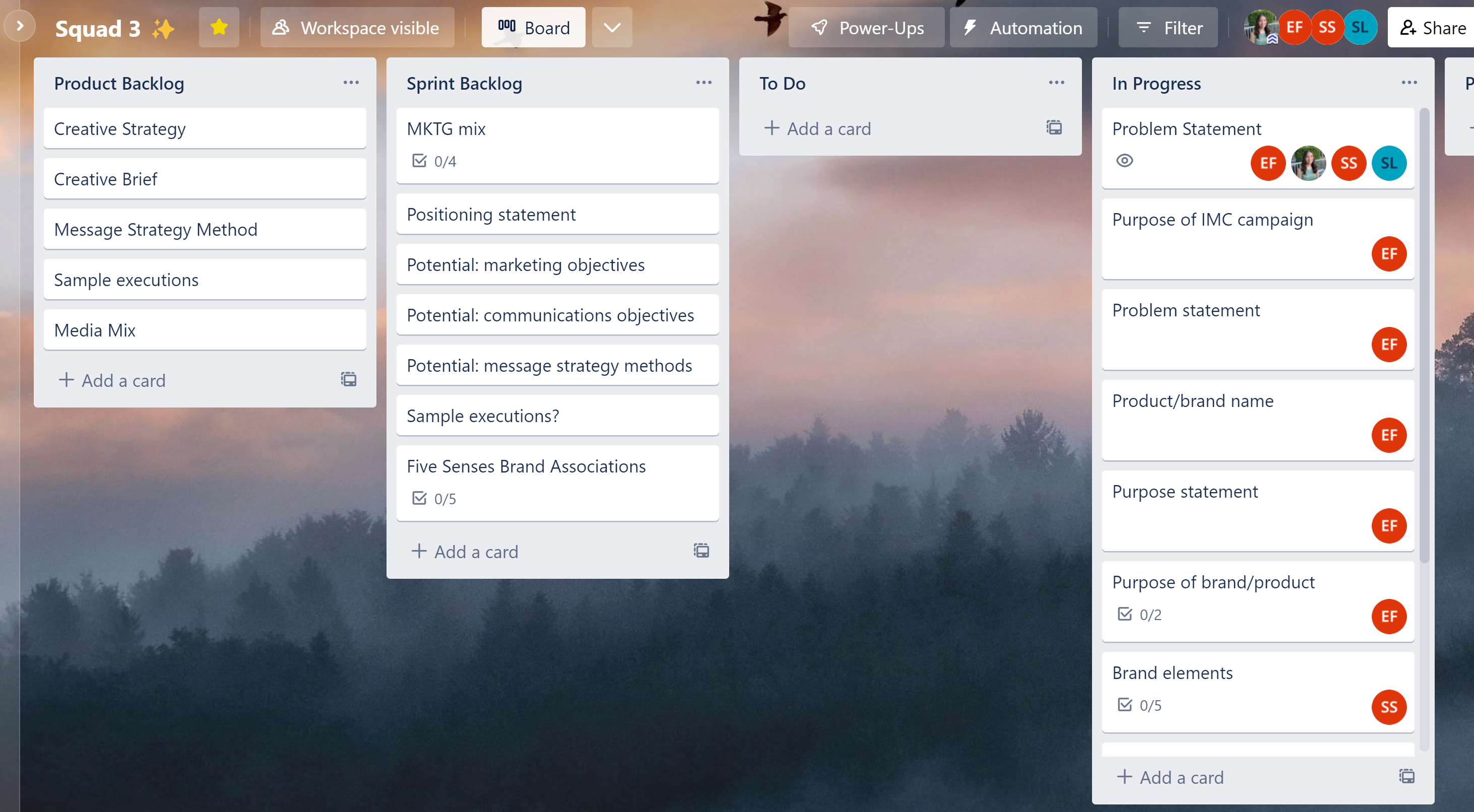5 Tips for IMC Product Managers

Now, in my current position as the director of operations for the class, I am seeing the product managers run into many of the same roadblocks that I did. Well if you are a product manager reading this, I hope the following 5 tips that I learned along the way helps you lead your team to success!
Post created by: Glory Burford AIMC Spring 2023
During my time as a product manager in the Applied Integrated Marketing Communications class at Western Washington University, I experienced many challenges and unanticipated obstacles. Going into it, I knew that leading a team of students would be a huge learning experience, and I was both excited and nervous for what the quarter held!
Now, in my current position as the director of operations for the class, I am seeing the product managers run into many of the same roadblocks that I did. Well if you are a product manager reading this, I hope the following 5 tips that I learned along the way helps you lead your team to success!
1. Incremental Work

One of the most important pieces of advice I can give you is to break down bigger steps into smaller pieces. An example of this is with the creative strategy: as one big deliverable, it is quite daunting, but if you zoom into the smaller pieces that comprise it, such as the problem statement or brand elements, it becomes much more manageable. Encourage your team members to tackle these smaller tasks one at a time, and suddenly you are making real progress instead of sitting in overwhelmed stagnation.
2. Walk them through it
What happens when a team member is having trouble getting started on one of these tasks? It’s understandable to sometimes not know where to begin, and you can help them move forward by walking them through it. Guide them in the process so that they know how to approach it next time, and be available as a resource to them.
However, this doesn’t mean do it for them. For my team’s product last quarter, we needed to build out several webpages using Drupal. I have lots of experience using Drupal, but none of my team members did. While I could have saved lots of time by simply doing it myself, my job as a manager was to guide my team in the product development process, making sure they understood and participated in the various elements. This meant walking my team member step-by-step through the process of creating a webpage on Drupal, and explaining each action taken to ensure they understood not just how, but why.
3. Fight fundamental attribution error
There may be a time during your management that one of your team members does not seem to be carrying their weight, or is not creating content at the level of quality you are expecting. In situations like these, we tend to attribute behavior to personal character, failing to take into account potential environmental factors. Say a teammate doesn’t complete a task on time or isn’t responding to messages. The immediate assumption may be that the teammate is lazy or a bad worker, and this assumption is a fundamental attribution error.
Take a step back and recognize the bias that is happening. You don’t know what situation your teammate may be in, so it’s important to communicate one-on-one with them to identify the problem and find solutions. Remember that you have been through this unpredictable process before as a content creator, so you can relate to possible frustrations they may be feeling. Also, make sure they know this, as they won’t want to listen if they think you are putting blame on them.
4. Shorter meetings
Another lesson I learned as a product manager is the value of short meetings. When we were initially meeting once a week for 2+ hours at a time, I found that there was a lot of idle time in the meeting where my team members would be looking at all the work we had to do, but not actually doing it. My team members then suggested we have more meetings throughout the week, but make those ones more like shorter check-ins.
When I implemented this suggestion, productivity greatly increased, as the meetings acted as reminders throughout the week of the work that needed to get done, and team members were more motivated to get work done to show their contributions at each meeting. They were also more likely to get started on work right away after the meetings ended, rather than feeling drained from a long meeting. More frequent meetings also meant that I could address teammates’ questions and concerns as they came up, instead of them saving their questions for later and then forgetting about them.
5. Time-bound sprints

A very important realization that most, if not all, of the product managers last quarter had (thanks to our instructor) is that the sprints that structure our work are time-bound, not work-bound. This means that a sprint has a hard start and stop date, and if you are not able to finish the work you were hoping to get done in that sprint by the time the sprint ends, you don’t extend the sprint until you finish it, but move the work into the next sprint.
When you extend the length of the sprint, you put off having your sprint review and retrospective meeting. This inhibits the ability of your team to make improvements with each sprint, learning from the last, as you are basically saying, “let’s get this work done first, then we can work on improving our process.” Improving the process needs to happen at the end of each sprint, and should not be delayed, in order to promote collaboration and growth.
With that, I send you back to your teams, hopefully having learned something from these 5 tips I learned for myself last quarter. No matter what you do, there are most likely going to be some complications, so just remember to stay agile in your approach and don’t get too bogged down in the details.
